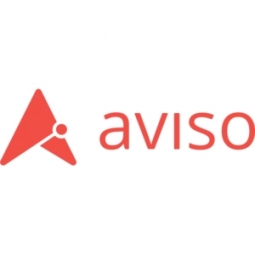Download PDF
Aviso’s Conversational Intelligence Provided Robust X-Ray For NetApp Sellers To Increase Customer Engagement
Technology Category
- Analytics & Modeling - Predictive Analytics
Applicable Industries
- Electronics
Applicable Functions
- Sales & Marketing
Use Cases
- Predictive Quality Analytics
- Remote Collaboration
Services
- Data Science Services
The Challenge
In 2020, NetApp was seeking a tool to streamline the input, review, and reporting of forecast calls at both the individual and team level. The company wanted an AI solution to enhance customer engagement and foster the internal training and growth of their sales reps. The challenges faced included a lack of insights into customer conversations, over-reliance on spreadsheets, ad-hoc deal reviews, ineffective CRM use leading to poor customer engagement, and no AI in the training of sales teams.
About The Customer
NetApp is a multinational technology company that provides software, systems, and services to manage and store data, including its proprietary Data ONTAP OS. The company has been in operation for over 25 years and has a global presence with more than 10,000 employees. NetApp's products and services are used by a wide range of industries, including the government, energy, financial services, healthcare, manufacturing, and more.
The Solution
Aviso provided a solution with its Conversational Intelligence tool. This tool offered conversational intelligence insights for sales reps, forecasting insights for different sales teams, sales activity tracking for all active opportunities, deal and pipeline insights, coaching insights, and virtual selling via deal & collaboration rooms. The tool was chosen for its clean and uncluttered UI that was easy to understand and navigate, along with Aviso’s ability to leverage Salesforce’s historical data for analysis and reporting.
Operational Impact
Related Case Studies.

Case Study
Remote Temperature Monitoring of Perishable Goods Saves Money
RMONI was facing temperature monitoring challenges in a cold chain business. A cold chain must be established and maintained to ensure goods have been properly refrigerated during every step of the process, making temperature monitoring a critical business function. Manual registration practice can be very costly, labor intensive and prone to mistakes.

Case Study
Cloud Solution for Energy Management Platform-Schneider Electric
Schneider Electric required a cloud solution for its energy management platform to manage high computational operations, which were essential for catering to client requirements. As the business involves storage and analysis of huge amounts of data, the company also needed a convenient and scalable storage solution to facilitate operations efficiently.

Case Study
Leveraging the IoT to Gain a Competitive Edge in International Competition
Many large manufacturers in and outside Japan are competing for larger market share in the same space, expecting a growing demand for projectors in the areas of entertainment, which requires glamor and strong visual performance as well as digital signage that can attract people’s attention. “It is becoming more and more difficult to differentiate ourselves with stand-alone hardware products,” says Kazuyuki Kitagawa, Director of Service & Support at Panasonic AVC Networks. “In order for Panasonic to grow market share and overall business, it is essential for us to develop solutions that deliver significant added value.” Panasonic believes projection failure and quality deterioration should never happen. This is what and has driven them to make their projectors IoT-enabled. More specifically, Panasonic has developed a system that collects data from projectors, visualizes detailed operational statuses, and predicts issues and address them before failure occurs. Their projectors are embedded with a variety of sensors that measure power supply, voltage, video input/ output signals, intake/exhaust air temperatures, cooling fan operations, and light bulb operating time. These sensors have been used to make the projector more intelligent, automatically suspending operation when the temperature rises excessively, and automatically switching light bulbs. Although this was a great first step, Panasonic projectors were still not equipped with any capability to send the data over a network.








